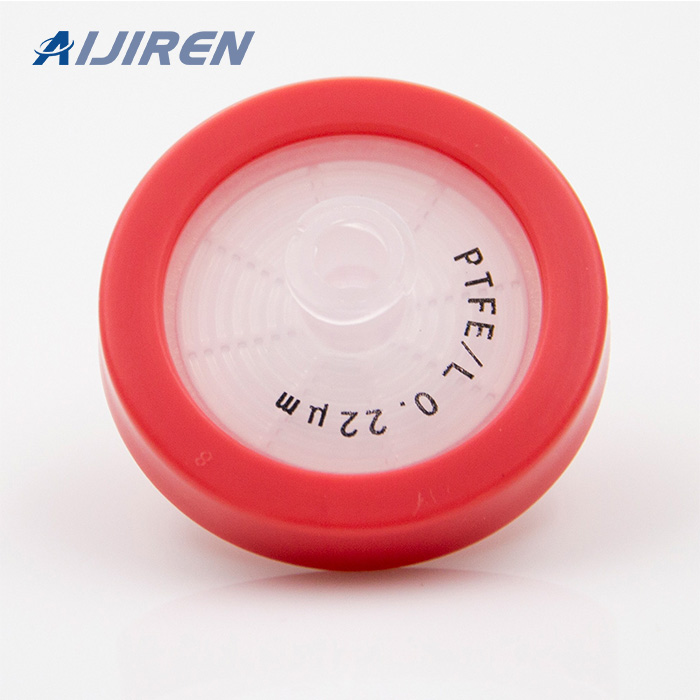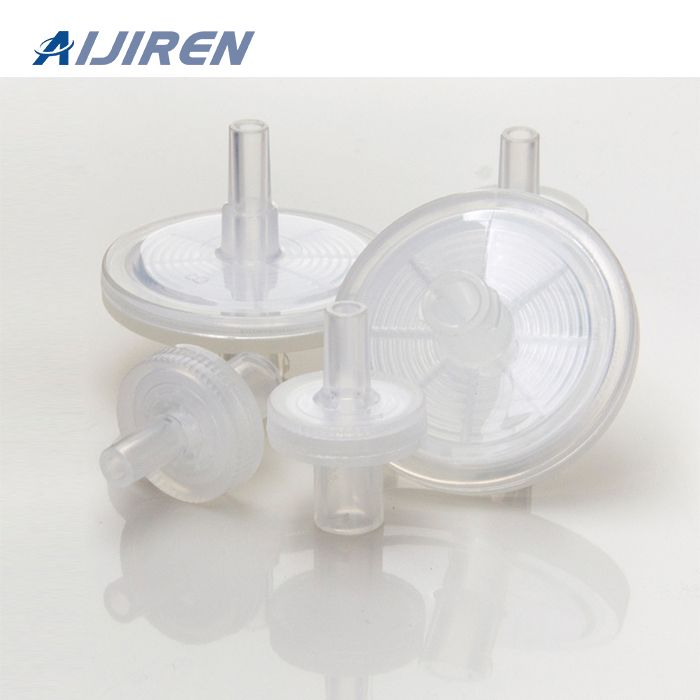Nylon Chemical Compatibility Chart – Foxx Life Sciences
Nylon is generally chemically resistant to oils and fuels, gasoline, mineral spirits, and some alcohols. Nylon has a high melting point, around 256°C / 492°F. NOT compatible with ozone, most acids. Please Note: The information in this chart has been supplied by reputable sources and is to be used ONLY as a guide in selecting equipment for
Filtration Media Selection Guide
Nylon binds protein, and should not be used when maximum protein recovery is important. Nylon can be sterilized by autoclaving at 120°C, gamma radiation, or ethylene oxide. View Nylon Membrane Filters View Nylon Syringe Filters. Polypropylene (PP) Polypropylene membranes are a hydrophobic membrane that exhibit a wide range of chemical compatibility to organic solvents. PP membranes are a good choice for filtration of HPLC samples when performing protein analysis by chromatography.
Filter Validation Protocol – Aijiren Technologies
sample solution. See Figure 1. Filter selection Selecting the correct fi lter material is quite simple. Depending on your method, you will typically use glass fi ber or membrane fi lters for HPLC anlaysis. Table 1 provides information on the four types of fi lters that can be used with the 850-DS for automated fi ltration of dissolution
Filter Vials | Captiva | Aijiren
Captiva filter vials reduce the steps in your gas chromatography (GC) or high-performance liquid chromatography (HPLC) workflow. Just fill, cover, and plunge! Filter vials are a fast, economical, and environmentally conscience way to filter samples. The single, convenient and easy-to-use unit replaces the combination of syringe filters
Membrane Filter Chemical Compatibility Chart
1) Syringe filter housings are manufactured from solvent-resistant, low-extractable polypropylene resins specifically selected for wide compatibility with common HPLC sample matrices. 2) Solutions at temperatures up to 100°C can be filtered using syringe filters. 3) Syringe filters can be sterilized by autoclave at 125°C for 15 minutes.
What can I do when my filter membrane leaves impurities in
Nylon filters tend to be more ‘extractable’ and leave behind less impurities (e.g. better for hplc sample prep); althought, their chemical resistance is not as good. Finally..if it all
Millipore® Filter Membranes – Sigma-Aldrich
Nylon Net Filter, 20.0 um pore size, hydrophilic nylon membrane, 47 mm diameter 14 % porosity 20.0 μm pore size Expand Page 1 of 24 Membrane Filter Characteristics Chemical Compatibility: The filter material must be compatible with the chemical nature of the substance being filtered to avoid structural failure.
HPLC prep—which filter fits your chromatography sample best?
Jul 11, 2017 · HPLC prep using a stacked syringe filter. Syringe filtration often involves aspirating the sample, fitting a particle filter, and filtering into an autosampler vial. The vial is finally capped and transferred to an autosampler. This filtration process can be repeated dozens of time a day, depending on your laboratory workflow and HPLC capacity.
Membrane filtration: A guide to choosing membranes | Cytiva
Aug 7, 2018 · Nylon (NYL) Membrane. Naturally hydrophilic with wide chemical compatibility and good resistance to organic solvents. Nylon is particularly suitable for high-pH samples but should be avoided in any protein recovery applications. When should you use it? DO USE: for filtering aggressive solutions such as alcohols and DMSO.
Membrane Filtration: Choosing the Correct Type of Filter | Cytiva
An incompatibility here can lead to sample solutes unexpectedly being retained by the filter (protein binding) or unwanted solutes being released into a sample (extractables) from the filter material or housing. Certain hydrophilic materials, such as nylon (NYL) and cellulose nitrate (CN), provide a high protein binding capacity. This property makes them unsuitable for protein recovery and analysis, where their use might result in inconsistent or unexpected results.
nylon sample used to hplc filter-HPLC Filter
Used for HPLC or Dissolution Testing sample filtration to remove undissolved particles; 25mm filters are the most commonly used disposable syringe filter Nylon Filters Hplc at Thomas Scientific. syringe filters for filtration, clarification or particle removal from buffers, reagents, DMSO, HPLC/GC solvents. SFCA – Use for immunological samples and HPLC Troubleshooting Guide – Sigma-Aldrich. We recommend that all samples be filtered through 0.45 μm or 0.2 μm syringe filters. We strongly
Filtering Samples for HPLC: More Than Just Column Protection
Jan 6, 2022 · One of the precautionary steps in widespread use is sample pre-filtration, where prior to loading the sample onto the instrument it is filtered, typically using a syringe filter, to ensure it is free of any particulate matter that might damage the injector or foul the column. Particulate contamination in HPLC
Cellulose filters instead of Nylon? | ResearchGate
All Answers (1) Smt. K. W. College Sangli 416416. Maharashtra. INDIA. No you can’t use cellulose filters in place of Nylon. Primarily because Nylon is virtually inert to a solvent like DMSO or

